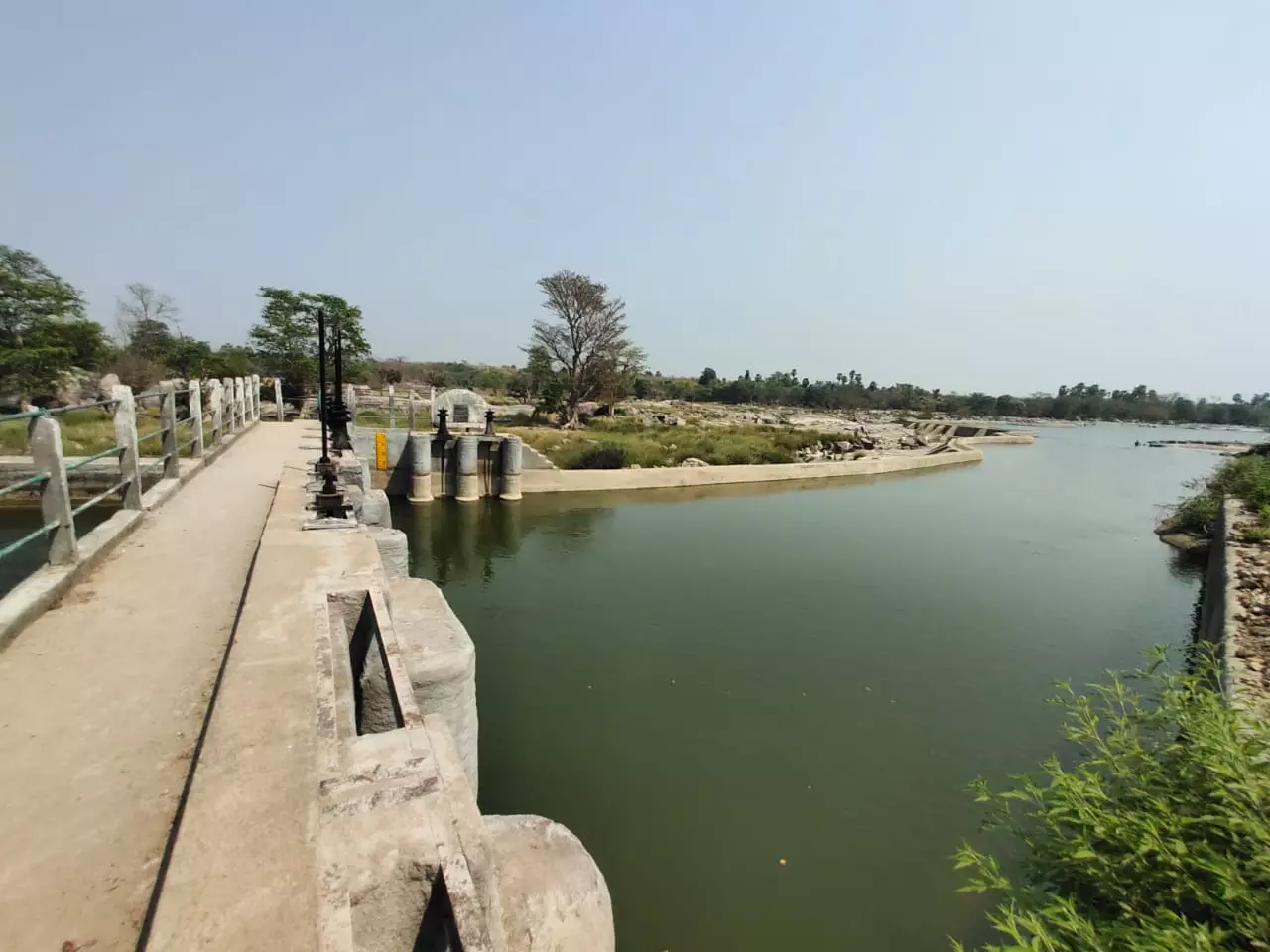Telangana's historic irrigation marvels: Sadarmatt Anicut and Pedda Cheruvu endure through time

Hyderabad: Telangana boasts of historical irrigation structures that have played a critical role in providing irrigation to the communities as well as helped preventing floods. Sadarmatt anicut in Nirmal and Pedda Cheruvu in Kamareddy serve as examples and were listed as world heritage irrigation structures (WHIS) by the International Commission on Irrigation and Drainage (ICID) in August 2018.
The Sadarmatt anicut was constructed across the Godavari by French engineer J.J. Ottley around 1870 and was restored in 1891-92, when Khanapur had its first taluqdar in C.E. Wilkinson and Nawab Ikbal-ud-Dowla, (Vicar-ul-Umra Bahadur), was the Prime Minister of Hyderabad.
'Anicut’ is an anglicised version of Telugu word ‘ana-katt’ meaning rainfall bund. An engineering marvel, the historical structure was built using local stones, lime, and simple irrigation equipment. The anicut has been the prime source of livelihood for fishermen in the area for centuries. It has also served as a recreational spot for the locals.
Located 47 km downstream of the Sriramsagar irrigation project, the structure measures 437.7 metres on the left flank and 23.8 metres on the right. The canal on the left is 21.5 km long, while the right one is 10 km. The distributary is 12-km-long.
It currently irrigates over 6,000 acres through its Khanapur left flank canal and 800 acres through the Badankurti right flank canal. The 36,926 sq miles of the catchment area spreading in Nirmal and neighbouring Jagtial and Nizamabad districts has been intercepted by the huge Sriramsagar Project, rendering the anicut a seasonal irrigation tank.
It continues to be in use mainly during the months between June and October, when the Godavari is raging with rainwater. The water reaches the anicut and allows for Kharif crops to be irrigated. "It is one of the oldest tanks but with the construction of Sriramsagar, the water reaches the anicut only during rainy season," said Surender Rathod, deputy executive engineer, Sadarmatt project.
Pedda Cheruvu was built by rulers of Domakonda Samsthanam. The lake is spread over 618 acres and dates back to 1897, the era of the Sixth Nizam Mir Mahbub Ali Khan. The catchment area of the 1.8-km-long bund is 68.97 sq km. With a capacity of 0.175 tmc ft, it irrigates more than 900 acres of land in Kamareddy and neighbouring areas. It also provides potable water for the residents and serves as a picnic and recreational spot.
“I am witness to these historical structures such as Saralasagar in Wanaparthy, Sadarmatt in Nirmal and Pedda Cheruvu in Kamareddy which, despite being over 150 years old, still provide water and livelihood to the communities. Internationally recognised, the last two also showcase the engineering skills of the experts of that time,” said Anuradha Reddy, convener, Intach Telangana.

